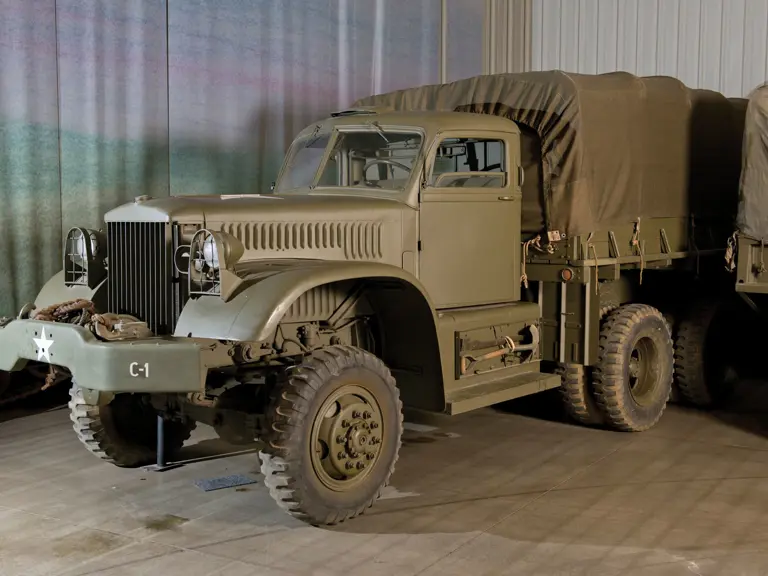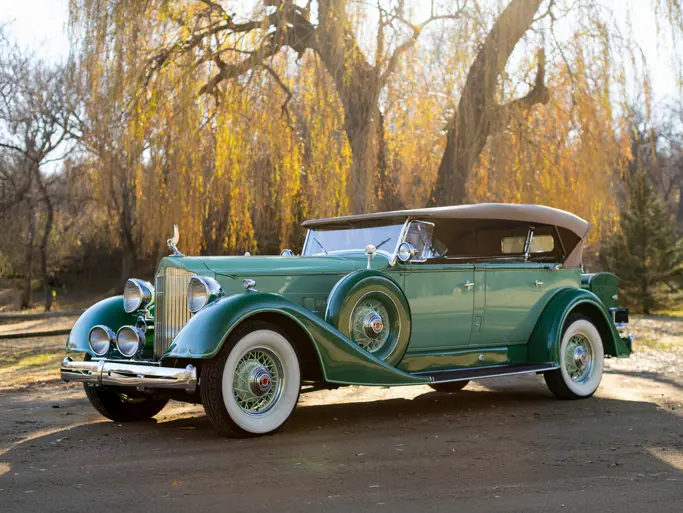Please Note: Information regarding these museum display vehicles was provided by the National Military History Center and has not been independently verified by Auctions America by RM ("AA"). As such, AA does not verify, warrant or guarantee any of this information. Prior inspection and research by the buyer is highly encouraged and recommended.
ATTENTION: Buyers are responsible for securing transportation and moving/loading of lots. Lot may be left on display indefinitely in the museum free of charge with a signed loan agreement form. Lots are sold as is, where is.
Please note this is being sold on "Bill of Sale" only.
Manufacturer: Diamond T
Production Year: 1942
Engine: Hercules RXC, in-line, liquid-cooled, 106-hp, six-cylinder
Length: 22-feet, 4-1/2-inches (with winch)
Width: 8-feet
Height: 8-feet, 3-3/8-inches
Weight: Approximately 9-tons (empty)
Armor: None
Armament: NONE on this example - Could be fitted with a Browning M2 .50 caliber machine gun (typically, every fourth vehicle)
Maximum Road Speed: 40-mph
Wheelbase: 151-inches
Markings: US First Army, 291st Engineering Battalion, C Company, 1st Vehicle
During 1940-1941, the main emphasis on truck procurement by the US Army concentrated on vehicles in the 1/4-ton, 1/2-ton and 2-1/2-ton classes. These were viewed as the main types of vehicles needed for tactical support of combat units. Only a few hundred vehicles of the heavier weight classes were ordered during this period. Four-ton Diamond Ts along with similar models produced by Autocar and White were included in the procurement. In 1941, the US Army decided to standardize future production solely with the Diamond T, 4-ton series. Experiences in North Africa and Italy highlighted the need for more 6x6 trucks of the 4-ton class. The US Army suddenly realized it had insufficient trucks to maintain its ever-lengthening supply routes. The demand for twice as many trucks in the heavy weight class- with production targets raised from 3,000 per month to 6,000- was not met until late 1944. The Allied invasion of Northwest Europe increased the demand for heavy trucks even more. Utilizing spare capacity in other truck plants helped increase production. In addition to the standard 968A cargo body version, Diamond T produced wreckers, dumpers and van bodies on the same chassis.



 | Auburn, Indiana
| Auburn, Indiana


